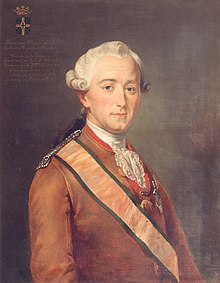
Josef Wenzel I, often referred to as just Wenzel, was the Prince of Liechtenstein between 1712 and 1718, and 1748 and 1772, as well as regent of Liechtenstein between 1732 and 1745. He first succeeded his distant cousin Hans-Adam I, even though he was not next in line. The actual heir was his uncle Anton Florian, who was not very popular among the family. Therefore Hans-Adam chose Josef Wenzel as his heir. He later decided to hand over the Principality in exchange for his getting the Dominion of Rumburk in 1718. Thirty years later he inherited Liechtenstein again after his nephew Prince Johann Nepomuk Karl died without male issue. As a military figure, Wenzel is known for his command of the Austrians at the Battle of Piacenza.

The House of Liechtenstein, from which the principality takes its name, is the family which reigns by hereditary right over the principality of Liechtenstein. Only dynastic members of the family are eligible to inherit the throne. The dynasty's membership, rights and responsibilities are defined by a law of the family, which is enforced by the reigning prince and may be altered by vote among the family's dynasts, but which may not be altered by the Government or Parliament of Liechtenstein.

The House of Sinzendorf was a German noble family with Upper Austrian origin, not to be confused with the Lower Austrian House of Zinzendorf. The family belonged to prestigious circle of high nobility families, but died out in 1822 in the male line.

The Imperial and Royal Foreign Ministry was the ministry responsible for the foreign relations of the Austro-Hungarian Empire from the formation of the Dual Monarchy in 1867 until it was dissolved in 1918.








